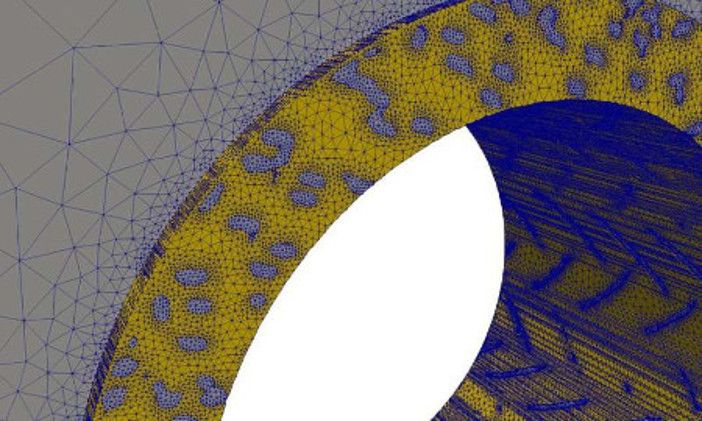Micro-scale 3-D imaging means that parts can be simulated to ultra-high accuracy (Image: Llion Evans, Swansea University)
Researchers at Swansea University in Wales are to research how to virtually test components using 3D x-ray imaging in a £1m, five-year project.
Increasingly, 3D x-ray imaging is being used to create image-based simulations of real parts. Researchers at Swansea believe the technology could replace physical experiments, to see if components meet a required standard – a “virtual qualification”.
The technique involves creating micro-accurate digital replicas of a component, including any manufacturing flaws, and then assessing how it performs.
However, a major challenge is that image-based modeling is still very time-consuming because it needs to be processed manually. This can take weeks for each component.
The research project, which is being led by Dr Llion Evans of Swansea University’s College of Engineering will look at ways of automating the virtual qualification workflow, using software tools, such as the automated processing of images.
The aim is to speed up the testing process so that what currently takes weeks could potentially be done in a matter of hours. As a result, it would become more viable for the industrial sector to use the technique and the risk of human error would be reduced.
Dr Llion Evans said, “Virtual qualification can be a big boost for manufacturing industry. But to make it worth companies’ while using it on their production lines, it has to be quick enough to work on the large scale they need. As well as saving time, automatic processing can give better data on how each individual part is performing, not just a simple pass or fail.
“In the long term, it could be used across all sectors of high-value manufacturing including aerospace.”
The Swansea-led project will include experts from other organizations, including the UK Atomic Energy Authority, Airbus Defence and Space, Nikon Metrology, TWI, Synopsys and Diamond Light Source.
March 12, 2018





